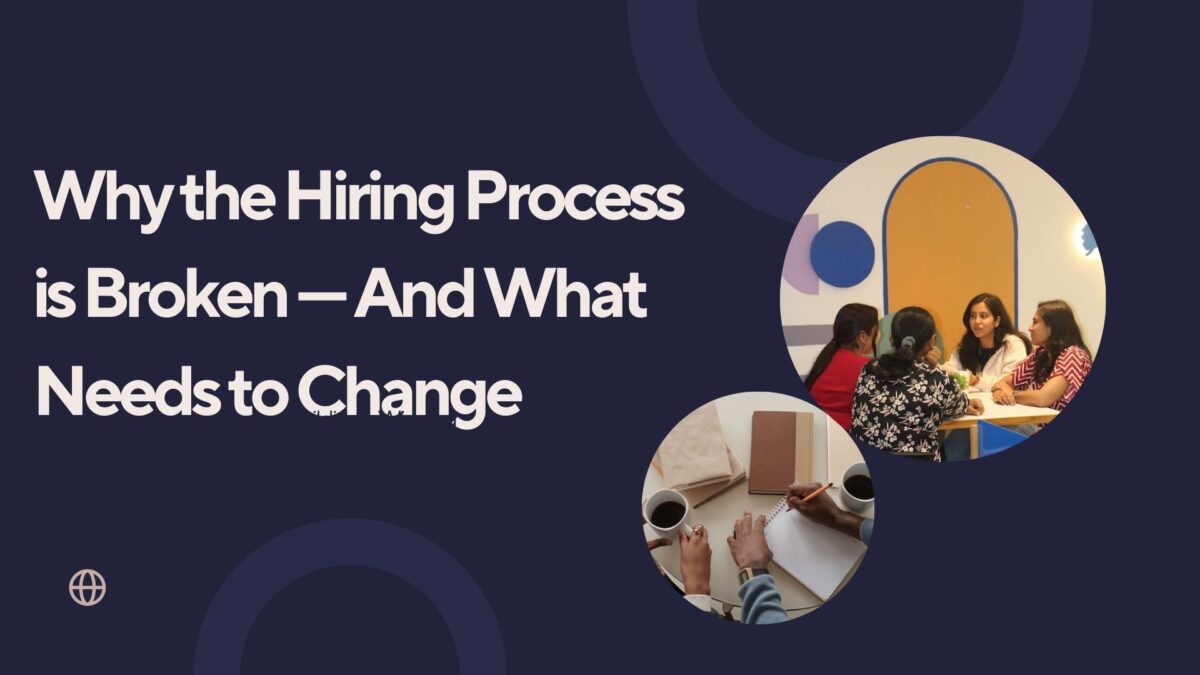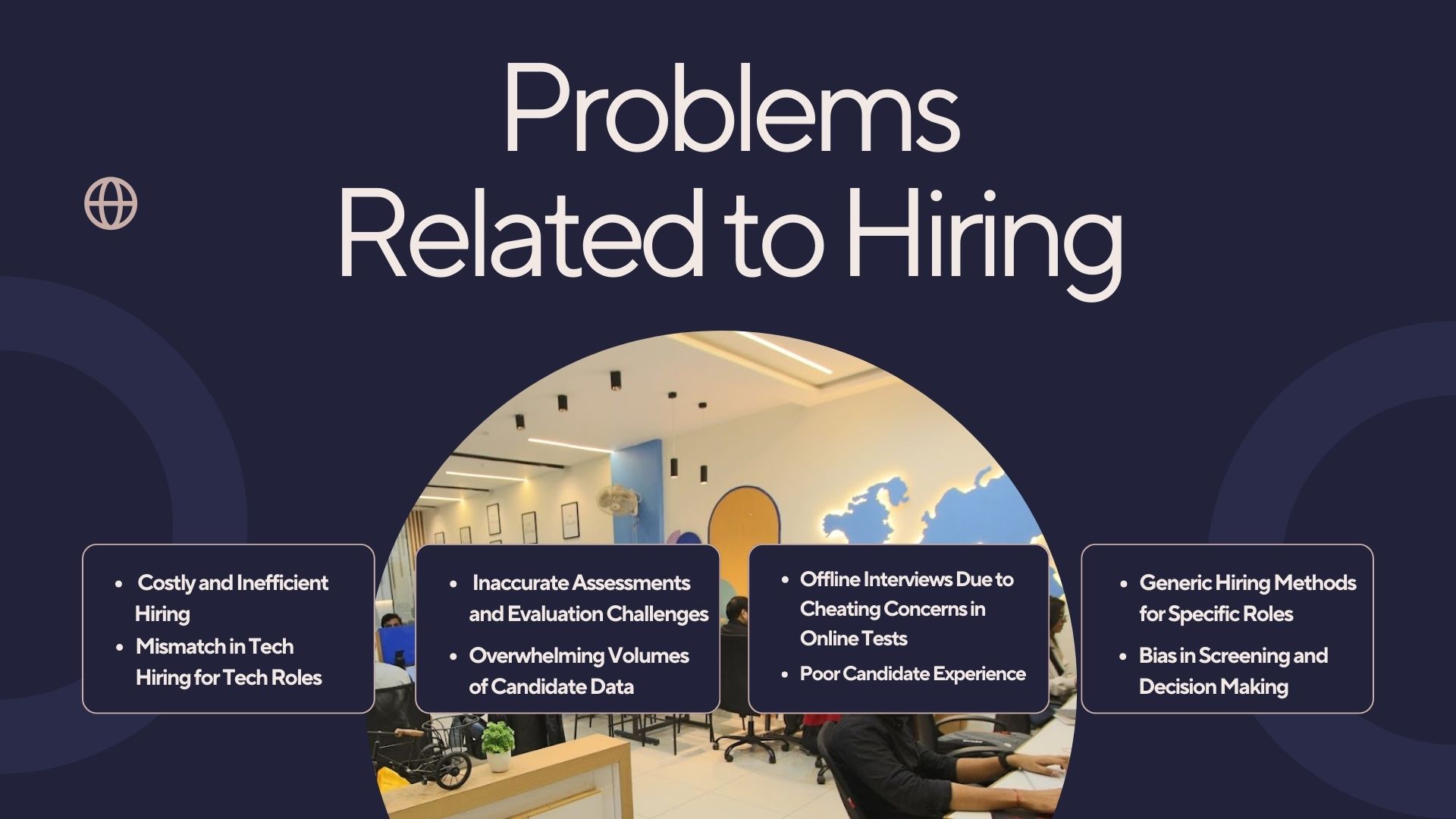Why the Hiring Process is Broken – And What Needs to Change

Despite all the talk about innovation, agility, and digital transformation, one area that remains alarmingly outdated across companies of all sizes is hiring. From multinational corporations to early-stage startups, nearly everyone agrees hiring great talent is difficult, expensive, and frustrating.
While organizations race to attract top talent, and job seekers flood portals with applications, the actual hiring process is riddled with inefficiencies and structural flaws that prevent the right matches from being made.
Let’s explore the biggest challenges that plague hiring today—and why these issues are more than just logistical hiccups.

1. Costly and Inefficient Hiring
Hiring isn’t cheap. From advertising job postings, investing in recruiting tools, spending recruiter hours, scheduling interviews, running background checks, and sometimes even flying candidates in—costs pile up.
According to the Society for Human Resource Management (SHRM), the average cost per hire is over $4,129 Link of report, and this figure jumps significantly in sectors like tech, finance, and healthcare.
For instance, Amazon reportedly spends millions annually on its university recruiting programs, which include on-site interviews and campus visits. For most companies, especially startups, such expenditure is just not sustainable.
2. Mismatch in Tech Hiring for Tech Roles
Ironically, many companies lack the technology to hire tech talent. Startups trying to build strong engineering teams often struggle to evaluate the technical skills of candidates. They either don’t have access to technical evaluators or use outdated platforms that don’t provide real-world assessment capability.
Many early-stage startups find themselves in a loop—needing tech to hire tech, but not having the tech to begin with.
3. Inaccurate Assessments and Evaluation Challenges
Assessment platforms used today often fail to give a holistic view of a candidate’s abilities. They’re either too generic or not tailored for specific job roles. As a result, companies end up hiring based on surface-level scores rather than actual fit or performance potential.
For example, a marketing agency may assess a candidate’s content creation skills through a multiple-choice quiz—which barely reveals their creative thinking or brand understanding.
4. Offline Interviews Due to Cheating Concerns in Online Tests
While online hiring tools are common, they still come with a big challenge—integrity. Many organizations and universities fear that candidates might cheat during online interviews or assessments.
As a result, universities such as IITs and IIMs often host offline placement interviews, requiring companies to fly in hiring panels and bear expenses for transport, accommodation, and logistics. This adds unnecessary costs and coordination effort—particularly problematic for bulk hiring or campus drives.
Also read: AI in Coding: How Intelligent Automation is Transforming Software Development
5. Resume Parsing and Candidate Understanding is Still Weak
Despite AI tools in the market, resume parsing remains a hit-or-miss. Applicant Tracking Systems (ATS) often fail to understand the nuances of different industries, unconventional job titles, or diverse career paths.
Take this example: A candidate who freelanced as a “Product Experience Strategist” might have skills equal to a product manager, but the ATS might screen them out simply because the job title doesn’t match standard criteria.
This leads to missed talent and poor candidate pools, especially for startups hiring for evolving roles.
6. Overwhelming Volumes of Candidate Data
Staffing and recruiting firms receive thousands of applications daily. Yet most still rely on manual filtering, resulting in delays, errors, and fatigue. With limited bandwidth, recruiters often default to “safe” candidates—those from big companies or top colleges—while skipping over unconventional yet potentially more effective talent.
For example, a recruiter at a mid-sized staffing firm may receive 3,000+ applications for a role in just 2 weeks, but can realistically process only a few hundred, often prioritizing those whose resumes look “neat” or “familiar”.
7. Bias in Screening and Decision Making
Whether it’s unconscious bias toward certain institutions, geographies, gender, or experiences, bias still influences hiring outcomes more than most companies admit.
A 2022 study by Harvard Business Review revealed that applicants with “ethnic-sounding” names were significantly less likely to get callbacks, even with identical resumes.
8. Poor Candidate Experience
Many companies underestimate the importance of treating candidates well during hiring. Ghosting after interviews, lack of timely feedback, or complicated application portals reflect badly on the company—and in a social media era, reputation damage spreads fast.
Glassdoor, LinkedIn, and even Twitter/X are full of horror stories about painful interview loops or last-minute cancellations that have cost companies’ great talent and brand value.
9. Generic Hiring Methods for Specific Roles
Not every role is the same, yet many companies use the same hiring funnel for all types of jobs—from junior analysts to senior designers. This leads to mismatches, longer time-to-hire, and higher attrition rates.
10. Lack of Real-time Analytics and Hiring Intelligence
Without the right data and dashboards, HR teams often lack clarity on:
- What’s working and what’s not?
- Where do candidates drop off?
- What’s the time-to-hire and cost-per-hire?
- Which sourcing channels are most effective?
In absence of this, hiring remains reactive rather than strategic resulting in repeated inefficiencies.
See the impact: AI-Powered Expert System for Operators & Technicians | FX31 Labs
Time for a Hiring Revolution

The hiring process today is costly, confusing, and cluttered. Whether it’s a staffing agency flooded with resumes, a startup with no resources to assess developers, or a university forced to spend lakhs on offline interviews—everyone pays the price. And this price isn’t just monetary. It’s time lost. Opportunities missed. Teams delayed. Culture is compromised.
It’s clear: the system isn’t broken because people don’t care. It’s broken because they don’t have the tools and infrastructure they need.
The future of hiring will belong to organizations that embrace smarter, more ethical, data-backed, and scalable solutions. Solutions that look beyond job titles and dig into talent. Solutions that streamline operations without compromising integrity.
Because in the war for talent, how you hire might just matter more than who you hire.
Stay tuned for the upcoming solution blog to this hiring problem—coming soon in this series.
